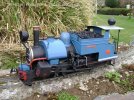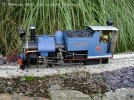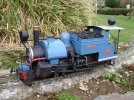DGE-Railroad
The Orchard Line
I just wanted to add another option to the list of input you've already received
To be clear, I'm not necessarily advocating this - I think all of the fantastic advice already been given should address whatever the cause is.
If having tried everything though you find you just can't 'get on with it' control-wise, a Slomo device would likely give you the slow, scale control you're looking for.
Slomo
As I say, it shouldn't be 'necessary' (as a very well respected and experienced member of the live steam community reminded me when I was thinking of one ) but it *is* an option, has a lot of very positive reviews and if the loco has no issues, should give you what you want.
) but it *is* an option, has a lot of very positive reviews and if the loco has no issues, should give you what you want.
I'm a firm believer in the right answer being whatever restores your faith in the lovely little Darjeeling and ensures you get to enjoy it..
To be clear, I'm not necessarily advocating this - I think all of the fantastic advice already been given should address whatever the cause is.
If having tried everything though you find you just can't 'get on with it' control-wise, a Slomo device would likely give you the slow, scale control you're looking for.
Slomo
As I say, it shouldn't be 'necessary' (as a very well respected and experienced member of the live steam community reminded me when I was thinking of one
I'm a firm believer in the right answer being whatever restores your faith in the lovely little Darjeeling and ensures you get to enjoy it..






